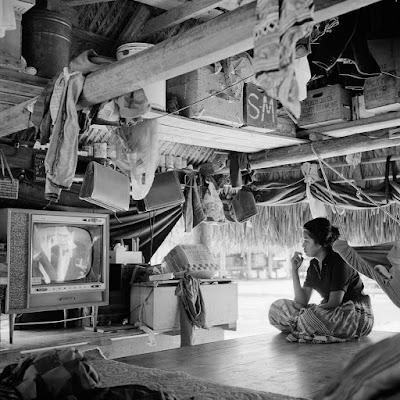Vivian
Maier
Vivian Maier was one of the most
mysterious photographers. She was born in NYC in 1926, but grown up in France. In
1951, she returned to NY alone and started to worked as a nanny. She also started
taking photos constantly on street from that time. Her photos were discovered
accidentally by John Maloof in an auction in 2007, two years before she died. Maloof
uploaded this “unknown” photographers’ work on Flickr and received a lot of praise. He later exhibited
these photos in Chicago and bring Maier’s work to publics. Unfortunately,
Vivian Maier had passed away at that time.
Maier tend keep herself closed and always
carry a camera with her when she went out. She has taken tons of negatives
mainly in NYC and Chicago. The motivation behind her photos is not clear, but
it is for sure is that she shot these photos for herself and rarely showed them
to anyone else.
I really like her photos. I could
not believe that these photos were shot by a nanny. By just looking at her
photos, people may feel that they are taken by a photojournalist or professional
photographer. Her work is very solid, sharp and vivid and full of detail. They
were exposed accurately and composed carefully. Maybe covered by her nanny job,
people looks so natural and relaxing in her photos. Also because she usually
shot closely, it feels that there is no distance between the objects and her.
Maier shot constantly in five
decades and had taken about 150,000 photographs through her life. That’s a huge
number comparing to 3,000 photos that I took with my film cameras in the past
four years. Moreover, I could hardly believe that she worked full-time as a nanny
and all of these work was shot in her leisure time. Some people thought they will spend more time taking photos if
they work full-time as a photographer. However, we can always find excuses for
not picking up a camera and shooting.
Vivian Maier is one of my favorite street photographer. She is so
mysterious and full of characters. She worked full-time as a nanny and only photographed
in spare time. She only shot for herself and never published her photos. She
lived in an afloat live and collected everything in boxes. There are more than
2,000 rolls of film that had not been developed before she passed away.















